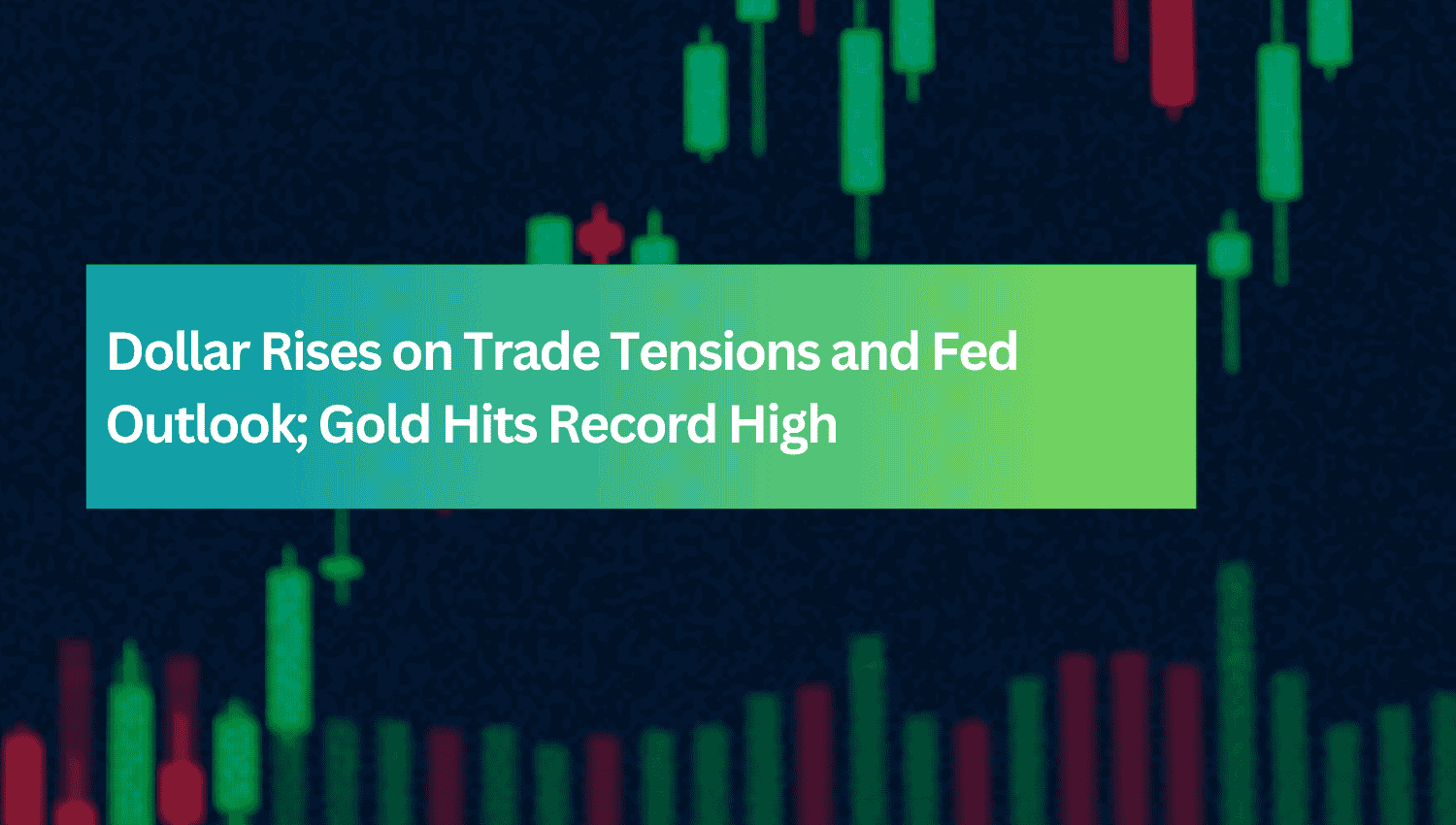Dollar Strengthens on Tariff Threats and Energy Price Surge

The dollar index gained on Monday as President Donald Trump renewed threats of 25% tariffs on steel and aluminum, fueling risk aversion. Investors remained cautious ahead of Wednesday’s U.S. CPI report and Fed Chair Jerome Powell’s testimony on Tuesday, both of which could shape rate expectations. A surge in crude and natural gas prices also lifted the dollar, with reports suggesting India and Taiwan may increase U.S. LNG purchases to mitigate trade risks.
Gold Soars as Trade and Geopolitical Risks Drive Safe-Haven Demand
Gold surged 1.6% to a record high, supported by safe-haven flows amid uncertainty over the Gaza ceasefire and global trade concerns.
Euro Falls for Third Session Despite Strong Data
The euro declined 0.17%, pressured by dollar strength, though gains in European equities and higher bond yields provided some support. Sentix investor morale hit its highest level since July, while ECB President Christine Lagarde reaffirmed that inflation is on track toward the 2% target.
Sterling Slips Ahead of UK GDP Report
GBP/USD fell 0.25%, sliding to its 21-day moving average of 1.2370, as traders positioned cautiously ahead of Thursday’s UK GDP release, which could reinforce rate cut expectations.
Yen Weakens as Risk Sentiment Improves
USD/JPY climbed 0.42%, recovering on short-covering and stronger risk sentiment. Yen crosses advanced in line with equity market gains, with EUR/JPY up 0.24% and GBP/JPY gaining 0.07%.
Equities Gain as Energy Sector Rallies
The S&P 500 rose 0.68%, led by energy stocks, while Treasury yields were mixed, with the 2s-10s curve widening to +22.2bp.
Market Outlook: Focus on Powell, U.S. Inflation, and Trade Policy
With Powell’s testimony, U.S. CPI data, and trade developments on the radar, markets are set for heightened volatility. The dollar remains in focus, with gold and commodity-linked currencies responding to geopolitical risks and energy market trends.

